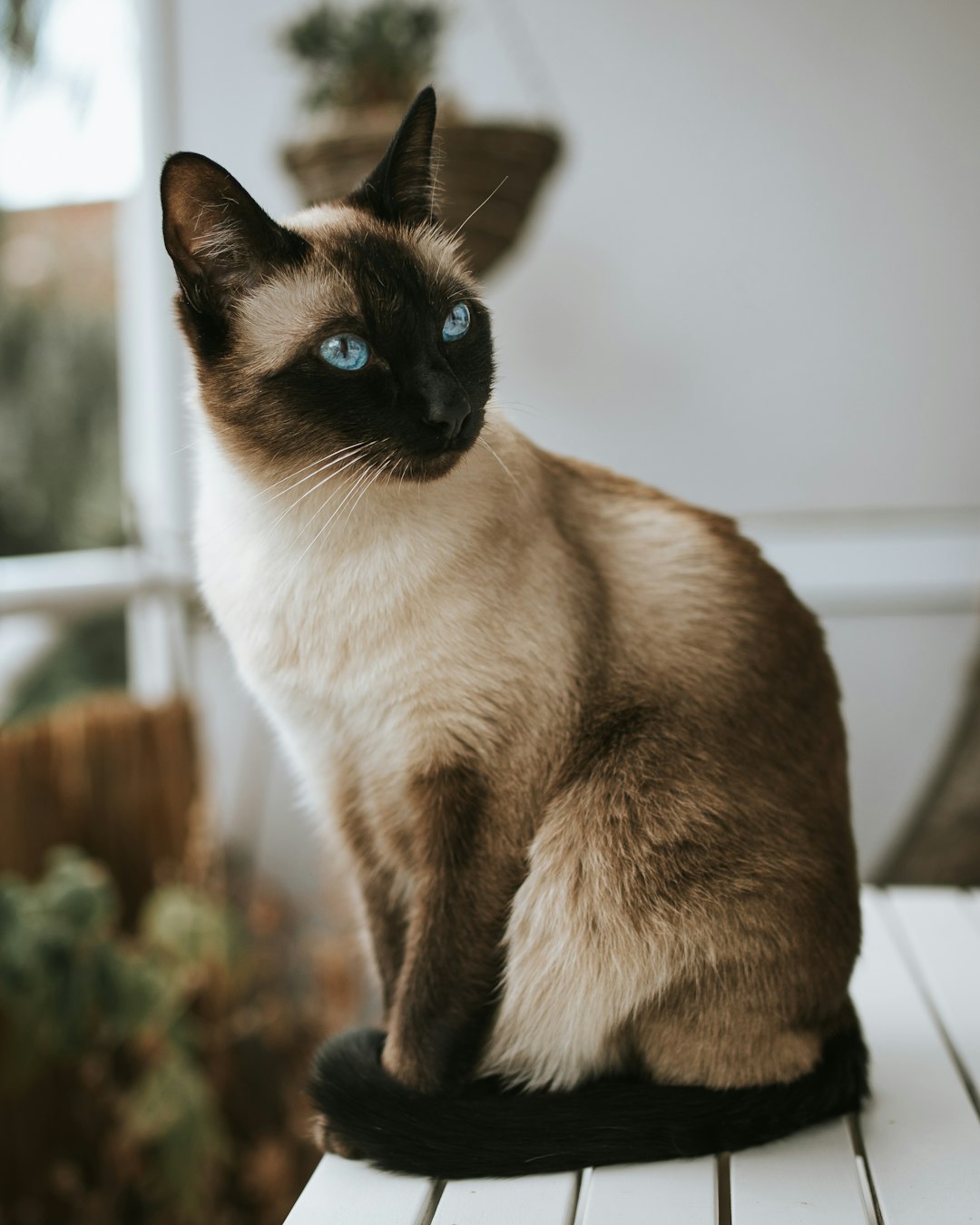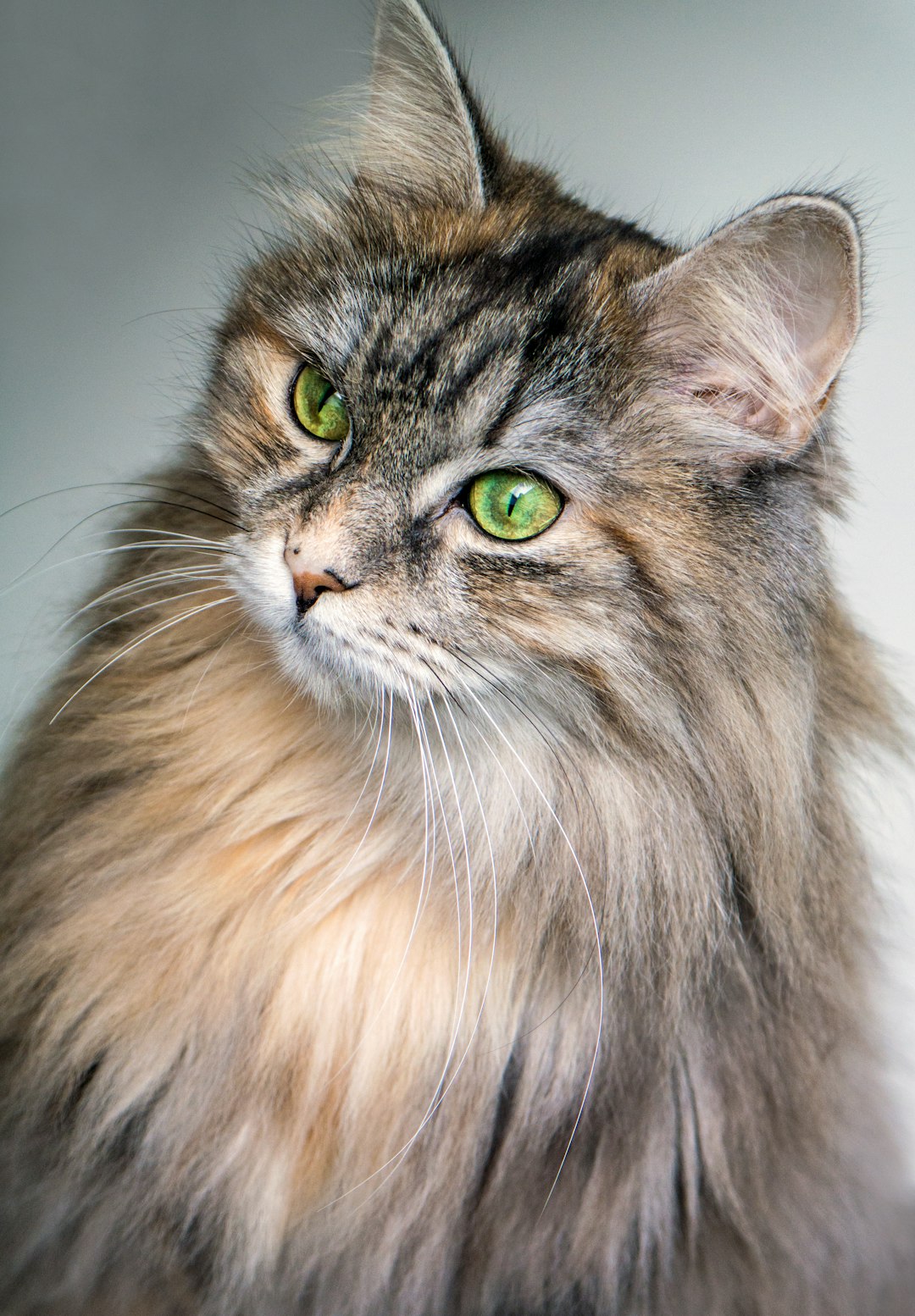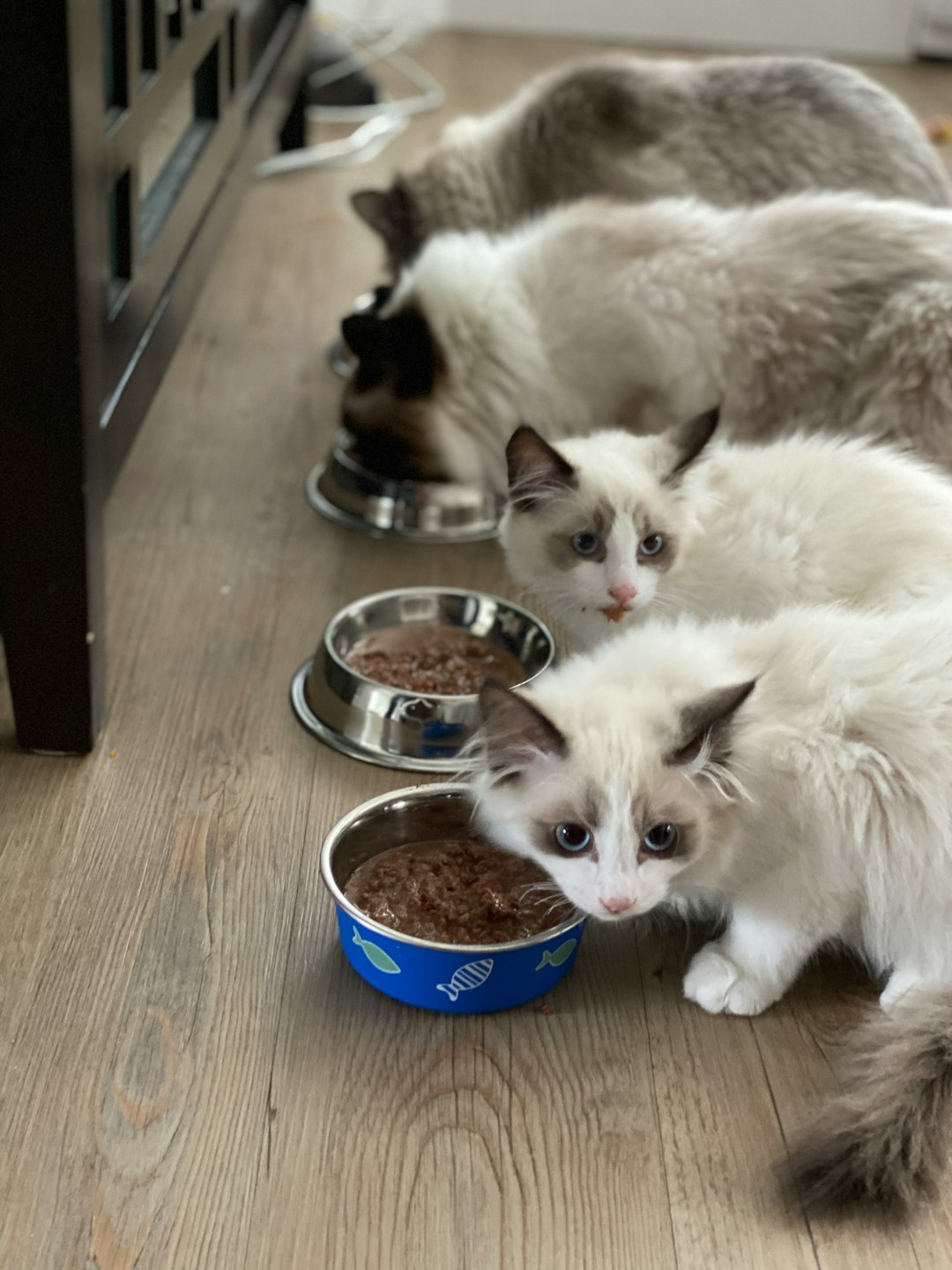Navigating the expenses related to your furry friend’s dental care can be overwhelming, especially when it comes to serious procedures like tooth extractions. Understanding the Cat teeth extraction cost is crucial for pet owners who want to ensure their feline companions receive the best possible care without breaking the bank. Several factors influence these costs, from the veterinarian’s experience to the complexity of the procedure. In this post, we will delve into the components that determine cat teeth extraction expenses, helping you make informed decisions while prioritizing your cat’s dental health. Additionally, we’ll explore preparation tips, financial assistance options, and preventive care strategies, all aimed at minimizing future dental issues and costs. So, let’s uncover the essential information that every cat owner should know before facing dental procedures for their beloved pets.
Understanding Cat Teeth Extraction Cost
Overview of Cat Teeth Extraction
Cat teeth extraction is a dental procedure where a veterinarian removes one or more teeth from your feline companion. It is typically performed under anesthesia, ensuring that the cat experiences minimal discomfort during the operation. The procedure can be necessary for various reasons, ranging from severe dental disease to accidental trauma.
Why Cats Need Teeth Extraction
There are several compelling reasons a cat may require tooth removal. One of the primary causes is periodontal disease, which, if untreated, can lead to pain, infection, and even systemic health issues. Other reasons might include fractured teeth, overcrowded dental arches, or oral tumors. Addressing these problems promptly is crucial for maintaining your cat’s quality of life.
| Reason for Extraction | Description |
|---|---|
| Periodontal Disease | Infection of the gums leading to tooth loss |
| Fractured Teeth | Broken teeth due to trauma or chewing on hard objects |
| Overcrowding | Lack of space for teeth to fit properly |
| Oral Tumors | Benign or malignant growths affecting oral health |
Common Conditions Leading to Extraction
Several dental conditions can necessitate extraction, including:
- Gingivitis: Inflammation of the gums often resulting from plaque buildup.
- Tooth Resorption: A painful condition where the tooth structure gradually dissolves.
- Cysts or Abscesses: Infections that can compromise the tooth’s integrity.
Understanding why these procedures might be necessary helps owners make informed decisions about their cat’s dental health. When considering the cat teeth extraction cost, it’s essential to evaluate both the procedure itself and any additional health factors that may be involved.
Factors Influencing Cat Teeth Extraction Costs
When contemplating dental procedures for your feline friend, it’s crucial to understand that several factors can significantly impact the total expenses involved in a teeth extraction. Below are the key considerations:
Veterinarian’s Experience and Expertise
The qualifications and skill level of the veterinarian directly affect the cost. Experienced vets may charge higher fees due to their advanced training and ability to handle complex cases effectively. Specialized clinics or veterinary dental specialists often come with a premium but provide improved care due to their extensive knowledge.
Location and Clinic Type
The geographic location of the veterinary clinic plays a significant role in determining costs. Urban areas typically see higher prices compared to rural locations because of the overall cost of living. Moreover, the type of clinic (private practice versus corporate or emergency facility) can influence the fee structure.
| Location | Average Cost Range |
|---|---|
| Urban Clinics | $300 – $800 |
| Rural Clinics | $150 – $500 |
Severity of Dental Issues
The complexity of the dental issues being addressed is another critical factor. Cats with advanced periodontal disease or multiple extractions will incur higher costs due to additional anesthesia, longer surgery times, and more extensive post-operative care. In contrast, a simple extraction might cost considerably less.
| Severity of Issues | Estimated Cost |
|---|---|
| Minor Extraction | $150 – $300 |
| Moderate Extraction | $300 – $600 |
| Major Extraction | $600 – $1,200 |
Understanding these factors will help pet owners anticipate the cat teeth extraction cost and make informed decisions for their furry companions.
Average Costs of Cat Teeth Extraction Procedures
General Price Range
When considering cat teeth extraction cost, pet owners should expect to pay anywhere from $300 to $1,500. This range largely depends on multiple factors, including the complexity of the extraction and the geographic location of the veterinarian. Generally, simple extractions tend to be on the lower end of the spectrum, while more complicated cases can climb significantly in cost.
Costs for Different Types of Extractions
The type of extraction required plays a crucial role in determining the overall expense. Below is a table outlining common types of extractions and their associated costs:
| Type of Extraction | Cost Range | Notes |
|---|---|---|
| Simple Extraction | $300 – $500 | Generally involves loose teeth or minor issues. |
| Surgical Extraction | $800 – $1,500 | Usually needed for impacted or damaged teeth. |
| Full Mouth Extraction | $1,000 – $1,800 | Performed in severe dental cases, involving sedation. |
Comparing Costs Across Clinics
Costs can vary significantly between clinics, so it’s important to shop around. Here’s a simple comparison to illustrate the differences you might encounter:
| Clinic Type | Average Cost | Pros | Cons |
|---|---|---|---|
| Local Veterinary Clinic | $400 – $800 | Personalized service | May have limited facilities |
| Specialty Veterinary Hospital | $1,000 – $1,800 | Advanced technology and expertise | Often more expensive |
| Mobile Vet Services | $300 – $600 | Convenience of home visits | May lack some surgical capabilities |
By understanding these cost factors and comparisons, pet owners can better prepare financially for their cat’s dental care needs.
Additional Costs Associated with Cat Teeth Extraction
When considering cat teeth extraction, it’s crucial to factor in more than just the Cat teeth extraction cost itself. Several additional expenses can arise during and after the procedure. Below are some key components that contribute to the overall financial investment for your cat’s dental health.
Pre-Extraction Dental Consultations
Prior to the extraction procedure, your veterinarian may require a dental consultation. These appointments allow for a thorough examination of your cat’s mouth and may include:
| Service | Estimated Cost |
|---|---|
| Initial dental exam | $50 – $100 |
| X-rays | $70 – $150 |
| Additional tests (bloodwork) | $100 – $200 |
These preliminary consultations are essential for determining the best course of action for your cat’s dental health. Ensuring your pet is healthy enough for anesthesia and surgery can avoid complications later on.
Post-Extraction Care and Medications
Following the extraction, your cat will require specific aftercare to enable a smooth recovery. This may involve:
| Care & Medication | Estimated Cost |
|---|---|
| Pain relief medications | $20 – $50 |
| Antibiotics | $15 – $40 |
| Follow-up appointments | $30 – $70 each |
Providing the necessary medications and follow-up care helps to manage discomfort and prevent infections.
Anesthesia and Monitoring Fees
A critical component of cat teeth extraction is anesthesia, which ensures your cat remains pain-free during the procedure. The costs associated with anesthesia and monitoring include:
| Fee Type | Estimated Cost |
|---|---|
| Anesthesia | $100 – $300 |
| Monitoring during surgery | $50 – $150 |
These fees ensure your cat is closely observed while under sedation, promoting both safety and comfort.
In summary, while the core Cat teeth extraction cost is significant, paying attention to additional expenses serves to protect your furry friend’s health and well-being.
How to Prepare for Your Cat’s Teeth Extraction
Pre-Surgery Instructions for Pet Owners
Preparing your cat for a teeth extraction involves several crucial steps. First and foremost, consult your veterinarian regarding any pre-surgery fasting requirements; typically, cats should not eat for at least 12 hours before the procedure. Gather any medical records or information about your cat’s health history that may be relevant to the surgery. Additionally, ensure your cat is stress-free by creating a calm environment at home. Here’s a concise checklist you can follow:
| Task | Details |
|---|---|
| Fasting | No food for 12 hours prior |
| Documentation | Bring medical records |
| Health Monitoring | Observe any unusual behavior |
| Comfort | Create a calm pre-surgery space |
What to Expect on the Day of Surgery
On the day of surgery, arrive at the veterinary clinic with ample time to allow for check-in and any last-minute preparations. The vet will conduct a thorough physical exam to ensure your cat is healthy enough for anesthesia. Expect them to provide a pre-anesthetic assessment and discuss the entire procedure, from the extraction to pain management strategies. Stay close during this process to help ease your cat’s anxiety.
Post-Op Recovery Guidelines
Once the extraction is completed, your cat will likely exhibit grogginess from the anesthesia. Prepare a comfortable rest area at home. You may be provided medications for pain management and antibiotics, which you can administer as directed. Be vigilant for signs of complications such as excessive bleeding or refusal to eat. Regular check-ins with your vet during this period are crucial to ensure your cat’s recovery goes smoothly. Following these guidelines will help ease the transition and support your cat during this recovery phase.
Financial Assistance Options for Cat Dental Care
Navigating the expense of dental care for your cat can be challenging, especially when it comes to cat teeth extraction cost. Fortunately, there are several financial assistance options you can consider to alleviate some of the financial burden.
Pet Insurance Coverage for Teeth Extraction
Many pet insurance policies cover dental procedures, including teeth extractions, but the extent of this coverage varies. It’s crucial to review your plan carefully. Generally, here’s a breakdown of what you can expect:
| Coverage Type | Typical Coverage % | Deductibles |
|---|---|---|
| Basic Health Plans | 50-70% | $100-$250 |
| Comprehensive Plans | 80-90% | $200-$500 |
Before enrolling in any insurance, ensure it includes dental coverage, as some policies may have limitations or exclusions on dental care.
Payment Plans from Veterinary Clinics
Many veterinary clinics understand the financial constraints pet owners face and offer flexible payment options. These may include:
- In-house financing: Allows you to make monthly payments.
- Third-party payment services: Providers like CareCredit enable you to split the cost into manageable installments.
Check with your veterinarian about available payment plans that can help you manage the cat teeth extraction cost without straining your budget.
Non-Profit Organizations and Support
Several non-profit organizations exist to support pet owners facing financial hardships. These organizations may offer low-cost dental care or grants for emergency procedures. Here are a few options to explore:
| Organization | Services Offered | Contact Information |
|---|---|---|
| The Pet Fund | Financial aid for urgent care | thepetfund.com |
| RedRover | Grants for urgent pet needs | redrover.org |
| Paws 4 a Cure | Assistance for various treatments | paws4acure.org |
Exploring these financial avenues can significantly ease the burden of dental costs for your beloved feline. Be proactive in seeking help, as many organizations and clinics are willing to assist you in ensuring your cat receives the necessary dental care.
The Role of Preventive Care in Dental Health Costs
Importance of Regular Dental Checkups
Regular dental checkups play a crucial role in maintaining your cat’s oral health. These checkups enable veterinarians to identify potential dental issues before they escalate into more severe problems that may require costly interventions, such as cat teeth extraction cost processes. By scheduling biannual checkups, you can keep your cat’s teeth and gums healthy, ultimately saving on future expenses related to dental treatments.
Home Dental Care Strategies
Implementing a home dental care regimen can significantly enhance your cat’s oral health. Here are some effective strategies:
| Strategy | Description |
|---|---|
| Brushing Teeth | Use a soft toothbrush and pet-safe toothpaste to brush your cat’s teeth regularly. |
| Dental Chews | Offer dental chews designed to reduce tartar buildup and promote chewing habits. |
| Water Additives | Consider using dental water additives to help reduce plaque formation in your cat’s mouth. |
Introducing these practices can lead to better dental hygiene and potentially reduce the need for extractions or other dental procedures.
Long-Term Cost Savings Through Prevention
Investing in preventive care not only aids in sustaining your cat’s oral health but also proves to be economically beneficial in the long run. By practicing regular dental maintenance:
- Reduced Emergency Situations: Early detection prevents emergencies that often require costly treatments.
- Lower Veterinary Bills: Frequent checkups and maintenance can lead to fewer expensive procedures, including possible extractions.
In summary, maintaining your cat’s dental health through preventive care strategies is essential to minimize both discomfort for your pet and financial strain on you.
Signs Your Cat May Need Teeth Extraction
Recognizing when your cat may require cat teeth extraction is vital for ensuring their overall health and comfort. Certain signs can indicate dental issues that could lead to extraction. Below are key indicators to keep in mind.
Behavioral Indicators of Dental Pain
Cats are skilled at hiding pain, making it crucial for pet owners to observe any changes in behavior. Some typical behavioral signs include:
| Behavioral Changes | Description |
|---|---|
| Reduced Appetite | Avoiding hard or dry food, showing reluctance to eat |
| Increased Irritability | Uncharacteristic aggression or vocalization |
| Excessive Grooming | Frequent pawing at the mouth or face |
| Withdrawal | Seeking solitude, avoiding interaction with family |
Physical Symptoms to Watch For
Besides behavioral changes, physical symptoms can also suggest dental issues:
| Physical Signs | Description |
|---|---|
| Swollen Gums | Red or inflamed areas indicating infection |
| Bad Breath | Foul odor emanating from the mouth |
| Discolored Teeth | Yellow or brown stains may signal advanced issues |
| Loose Teeth | Teeth that seem unsteady or movable |
When to Schedule a Veterinary Evaluation
If you observe any of these signs, it is essential to schedule a veterinary evaluation promptly. Regular dental check-ups can help identify underlying issues before they escalate. Consult your veterinarian if your cat exhibits:
- More than one behavioral change
- Noticeable physical symptoms
- Signs of discomfort during eating or grooming
Early intervention can not only alleviate your cat’s pain but also help manage cat teeth extraction cost effectively by addressing problems before they require more invasive treatment.
How to Choose the Right Veterinarian for Teeth Extraction
When your feline friend requires a teeth extraction, selecting the right veterinarian is crucial. Considering the complexity and potential costs involved, such as the cat teeth extraction cost, a choice grounded in thorough research will ensure your pet receives the best possible care.
Essential Qualifications to Look For
First and foremost, ensure the veterinarian is licensed and has specialized training in dentistry. A veterinarian certified in veterinary dentistry will have deeper knowledge and experience in performing extractions, ensuring your cat’s safety and comfort. Additionally, consider their years of experience and the number of successful extractions performed. This data can guide your decision significantly.
Evaluating Clinic Reviews and Testimonials
Next, take time to read reviews and testimonials about the clinic. Platforms like Yelp and Google Reviews can provide insights into other pet owners’ experiences. Look for comments on the quality of care, staff professionalism, and follow-up support. Positive ratings or even awards can signal an excellent choice.
| Review Source | Average Rating | Notable Comments |
|---|---|---|
| Google Reviews | 4.7 | “Exceptional service and care!” |
| Yelp | 4.5 | “Highly skilled veterinarians.” |
| 4.8 | “Caring staff and a clean facility.” |
Questions to Ask Before the Procedure
Finally, prepare a list of questions to gauge the veterinarian’s capability and comfort level for both you and your cat. Inquire about the extraction process, pain management options, post-operative care, and cost estimates, including the cat teeth extraction cost breakdown. By addressing these queries, you can assess the veterinarian’s transparency and care philosophy, ensuring you make a well-informed decision for your beloved pet.
Real-Life Stories: Experiences with Cat Teeth Extraction Costs
Case Studies and Cost Breakdown
Understanding real-life experiences can shed light on the cat teeth extraction cost and the varying factors influencing expenses. Here are a few case studies:
| Case | Cat Breed | Age | Extraction Type | Total Cost |
|---|---|---|---|---|
| Case 1: Whiskers | Siamese | 5 years | Full mouth extraction | $1,200 |
| Case 2: Fluffy | Maine Coon | 7 years | Single tooth extraction | $300 |
| Case 3: Shadow | Tabby | 3 years | Multiple tooth extraction | $800 |
These examples illustrate the variance in costs associated with different breeds, age, and types of extraction needed.
Owner Testimonials
Many cat owners have shared their experiences regarding dental procedures. Sarah, an owner of a 7-year-old Persian named Bella, explained, “The extraction process was smooth, but I was surprised by the total expenses. The vet provided a detailed breakdown, which really helped me plan financially.” Another owner, Mike, mentioned, “After my cat Jasper’s single tooth extraction, I found the overall experience to be less stressful due to the vet’s thorough communication about the costs involved and necessary aftercare.”
Lessons Learned and Advice
These stories highlight important lessons for cat owners. Here are some tips:
- Research Costs: Always inquire about costs upfront to avoid unexpected expenses.
- Discuss Payment Plans: Ask your veterinarian about payment plans or financial assistance options if necessary.
- Evaluate Preventive Measures: Regular dental check-ups can potentially reduce the need for extractions in the future.
Understanding these real-life experiences can empower other cat owners to make informed decisions regarding dental care and the associated costs.
Frequently Asked Questions
What factors affect the cost of cat teeth extraction?
The cost of cat teeth extraction can be influenced by several factors, including the complexity of the extraction, the type of anesthesia required, and the age and health of the cat. If the extraction involves impacted teeth or if a surgical approach is necessary, costs can increase significantly. Additionally, the facility where the procedure is performed, whether it’s a veterinary clinic or an emergency animal hospital, can also affect the overall cost. Preoperative workups, such as blood tests, can add to the total expense.
How much can I expect to pay for cat teeth extraction?
On average, the cost for cat teeth extraction can range from $200 to $800. This price range can vary based on the factors previously mentioned, including the number of teeth being extracted and any additional treatment that may be required, such as dental cleanings or follow-up visits. It’s advisable to consult with your veterinarian for a detailed estimate based on your cat’s specific dental health needs.
Is teeth extraction painful for cats?
Teeth extraction can cause discomfort for cats, but veterinarians typically administer anesthesia to ensure that the procedure is as painless as possible. Post-extraction, your veterinarian will often prescribe pain relief medications to help manage any discomfort your cat may experience as it recovers. While some cats may have a brief period of discomfort post-surgery, most recover quickly within a few days and start eating normal food again.
Are there alternatives to teeth extraction for my cat?
Yes, there are several alternatives to teeth extraction that can be considered depending on the dental condition of your cat. These may include dental cleaning, fluoride treatments, and dental sealants aimed at preventing decay and maintaining oral health. In some cases, root canals might be effective for salvaging a tooth that would otherwise need to be extracted. It’s essential to discuss all available options with your veterinarian to determine the best course of action for your cat.
How can I prevent my cat from needing teeth extraction in the future?
To prevent future teeth extractions, regular dental care is crucial. Brushing your cat’s teeth at home, providing dental treats, and scheduling regular veterinary dental check-ups can help maintain oral health. Additionally, feeding your cat a balanced diet and ensuring access to fresh water can support overall health, which also contributes to better dental hygiene. Early detection of dental problems through routine vet visits can also help in managing and preventing conditions that might warrant extractions.



